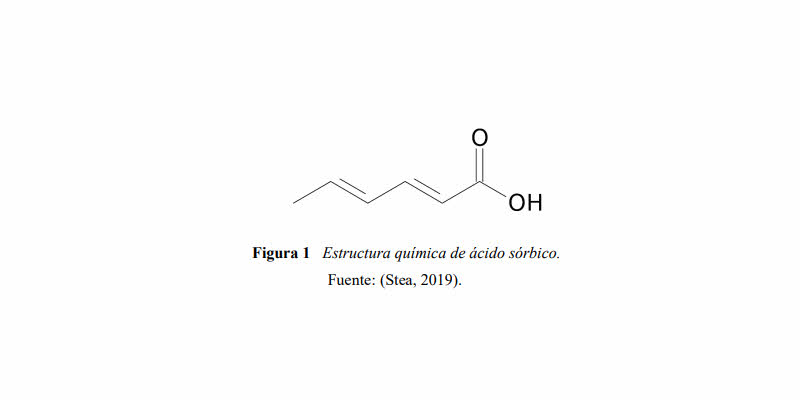Sorbic acid is internationally recognized as a food additive that receives the code E-200, it belongs to the family of unsaturated fatty acids that contain carbon-carbon double bonds.
Over the years, the food industry has evolved and preservatives have become an alternative to preserve beverages for a long period of time without losing their nutritional values.
Villada & Moreno (2010) indicate that these compounds provide microbiological safety, good appearance, aroma and flavor, so, within the chemical agents with antimicrobial characteristics that are used we have sorbic acid together with its classification of sorbates and benzoic acid and its family of benzoates (Sauceda, 2011).
These preservatives are recognized by the FDA and together with the Ecuadorian Ministry of Health and technical standard CODEX, they approve their use as long as they comply with the parameters of manufacturing, quality control, storage, but above all the tolerable concentrations for humans. If this is not the case, these entities are responsible for controlling the admissible value of daily intake of the additives present in food.
Sorbic acid It is considered a safe compound for human consumption, since it easily decomposes into water and carbon dioxide, so the body can metabolize it without causing any problem or toxicity. It also performs antimicrobial and antifungal functions, since at a pH lower than 5.6 it is able to inhibit the formation of molds, yeasts and certain aerobic bacteria more effectively.
Sorbic acid, with its chemical formula C6H8O2, being weakly soluble in water, is most commonly used in its potassium sorbate form.
Its active ingredient is the non-dissociated molecule, so the activity depends on the pH, it is widely used in the production of cheeses, juices and baked goods as a preservative (Berk, 2013).
Its working mechanism is based on inhibiting enzymes present in carbohydrate and citric acid cycles, since it forms covalent bonds with SH groups, thus inactivating them.

Do you want to Contact Lubrizol?
Request more information by completing the following form here


